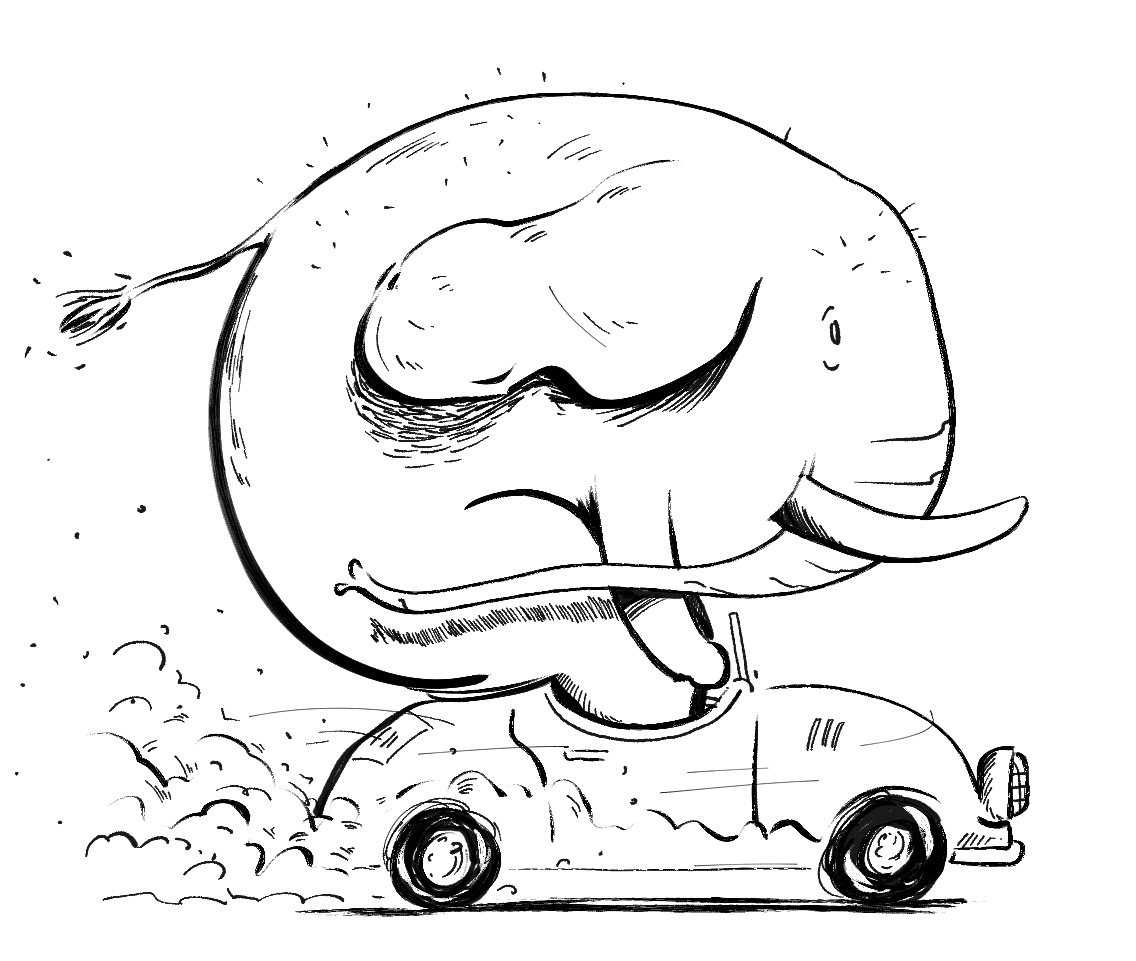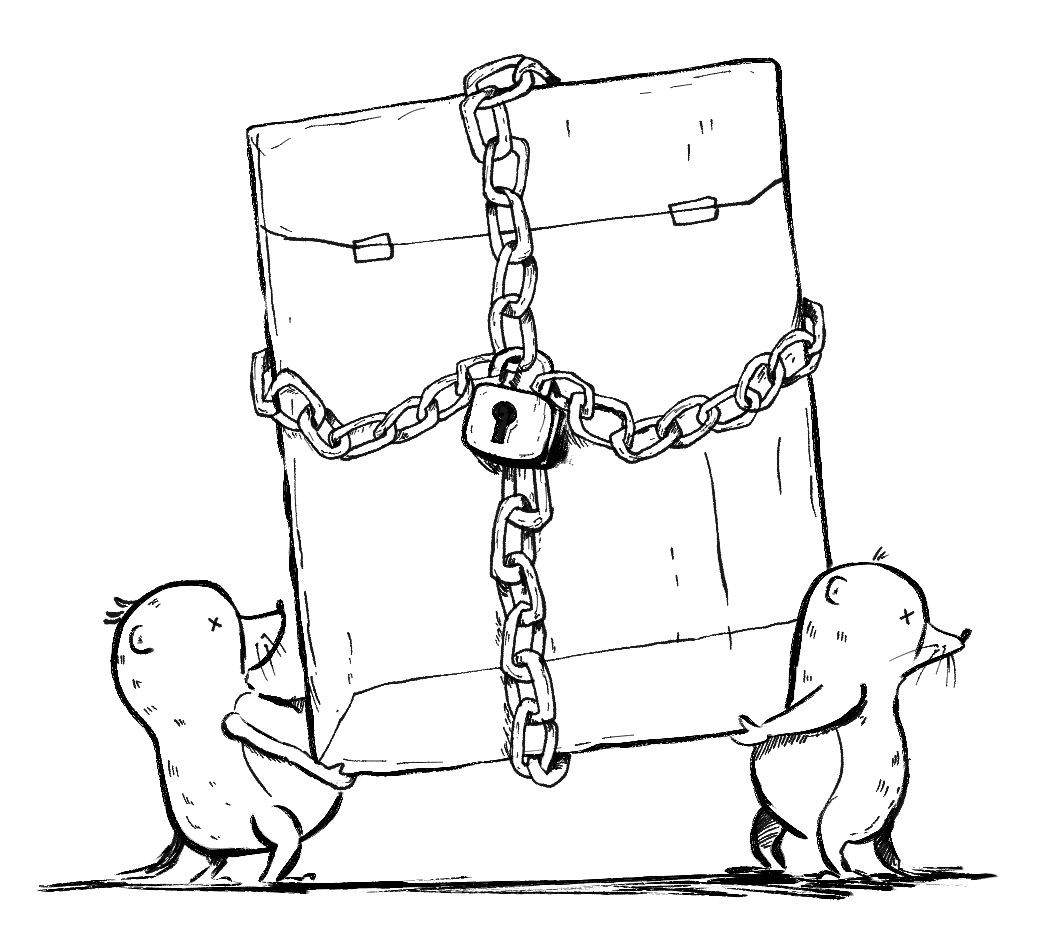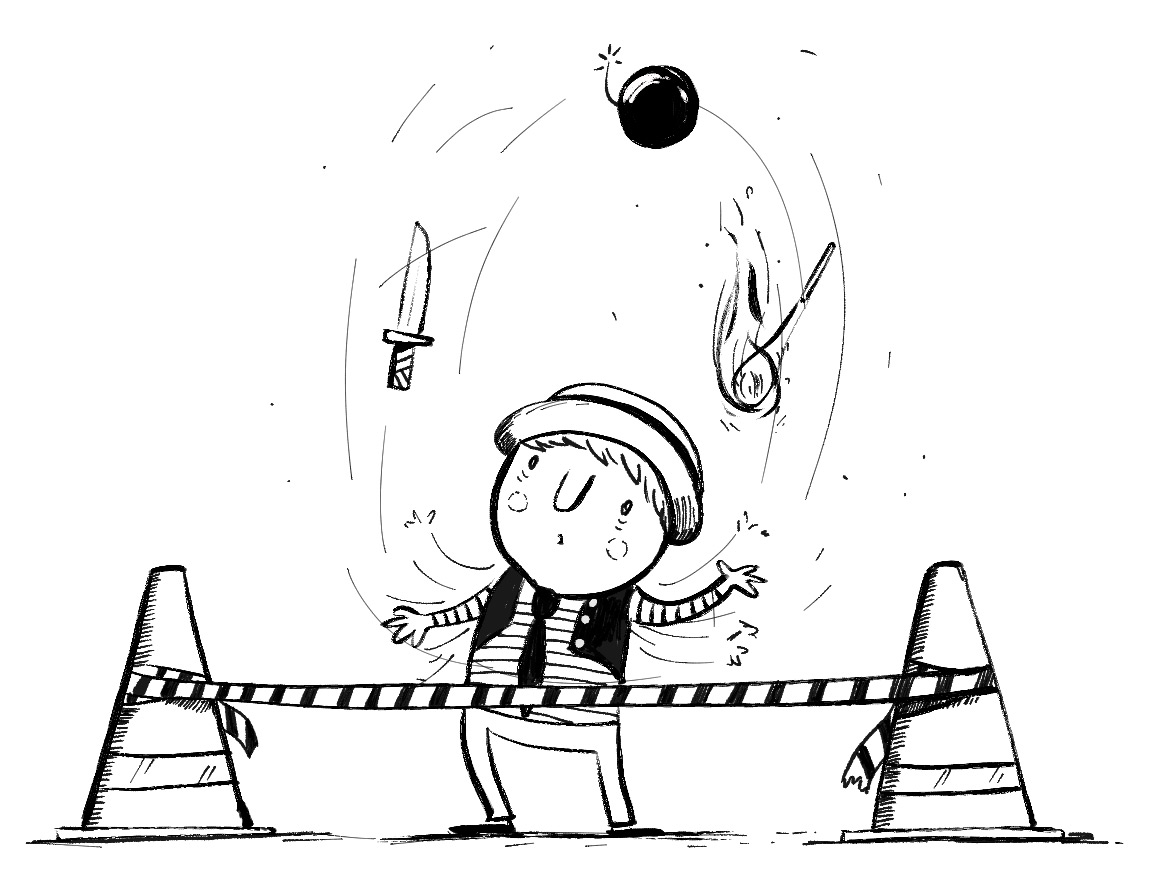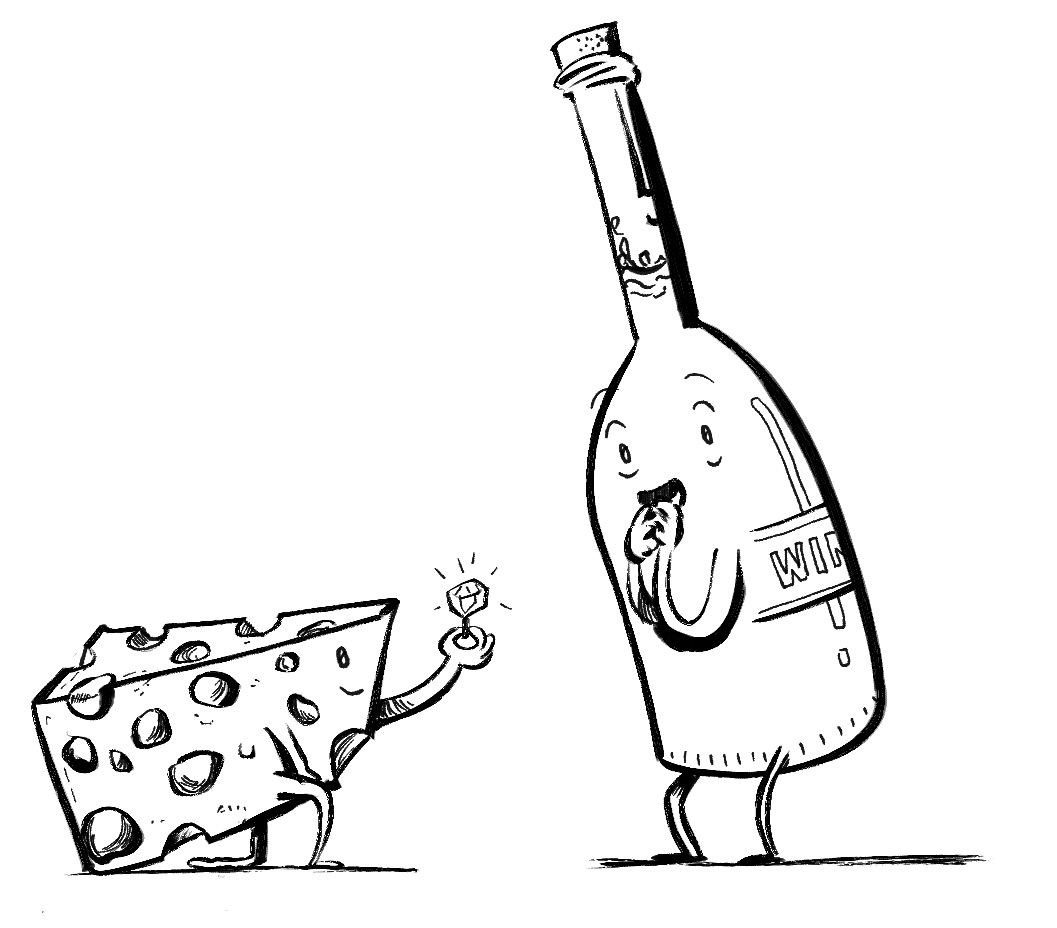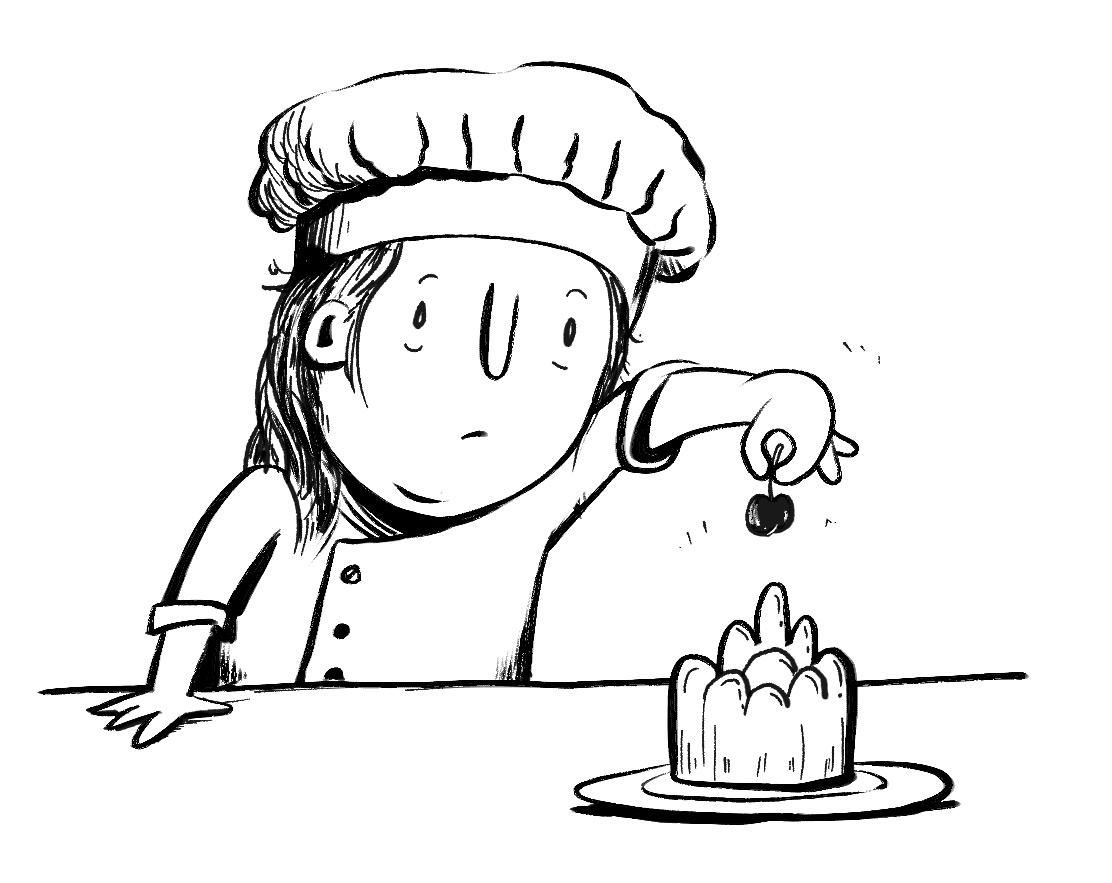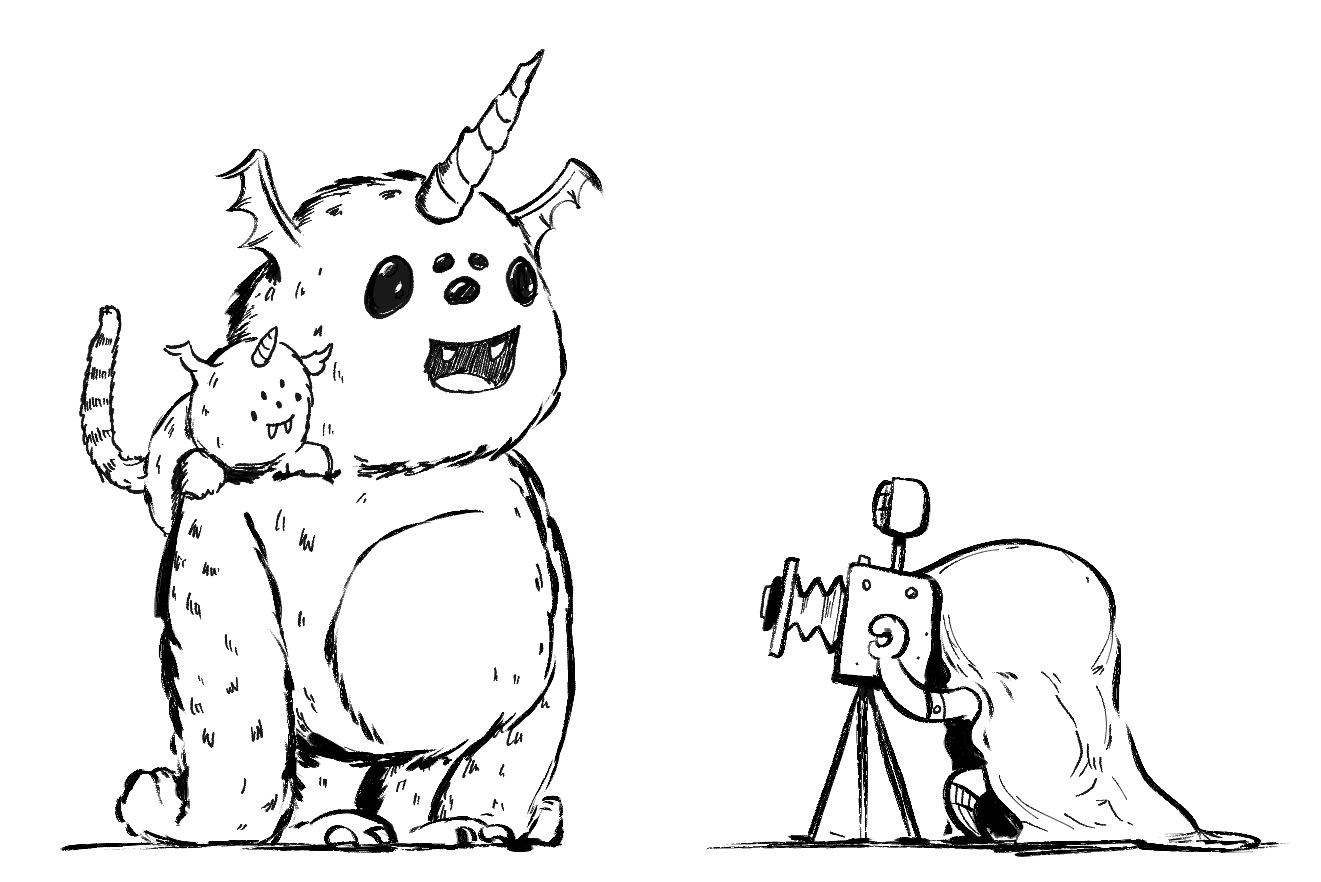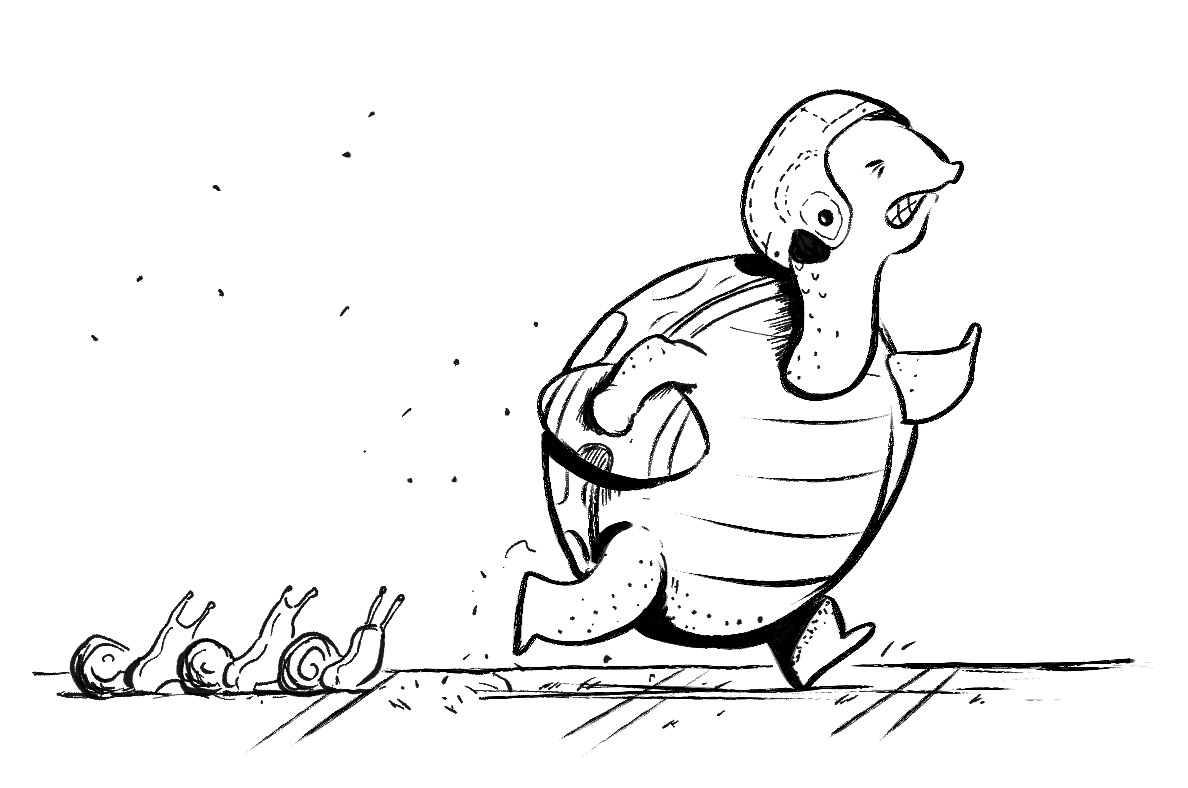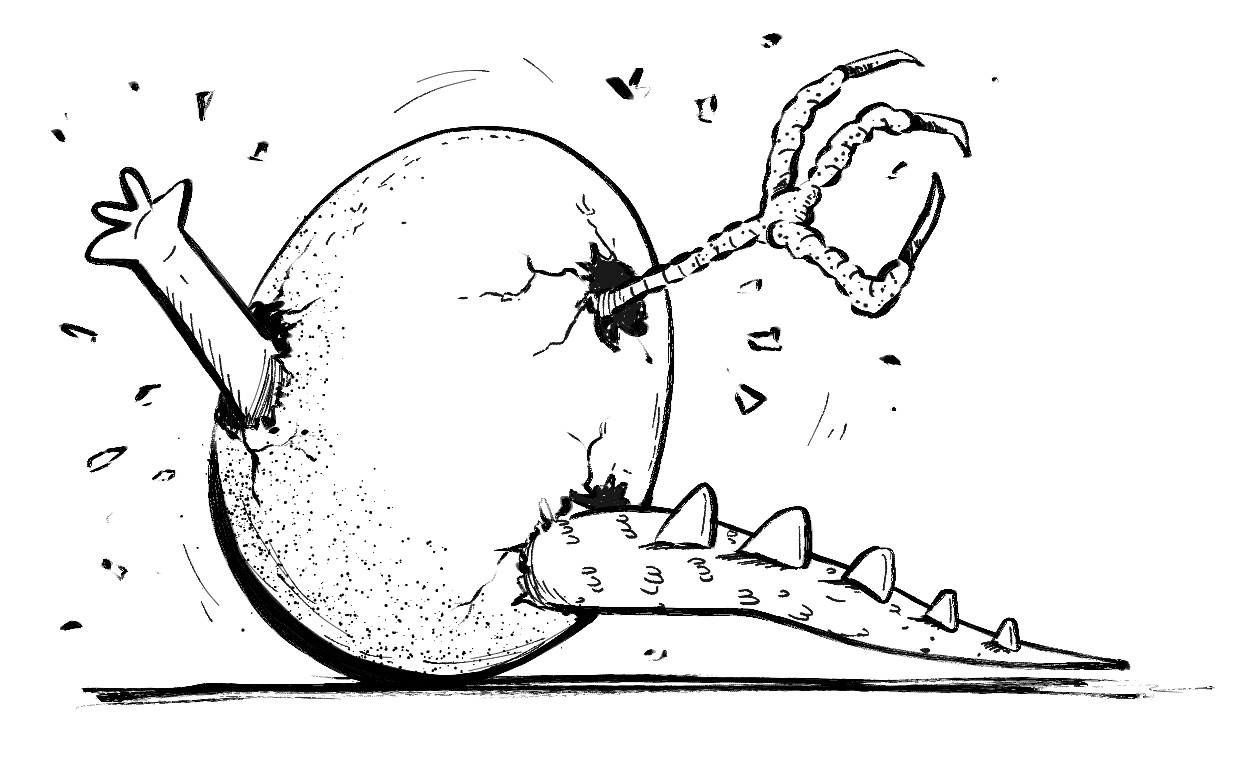Comics is a new medium to me. It looks interesting. After almost a decade of working in picture books I know now that I can draw and I can tell a story. I’m familiar with the length and complexity of the stories that work for this age group. I’m familiar with how these books are used in the home and in school.
But, I’ve got bigger stories to tell.
The first comics project I dreamt up was a multi-book series – a fantasy/adventure. It went something like this:
Thought to be a tale the elders used to discipline kids, The Grey has taken over the world and colour has disappeared. After many years of training, Ri, the best 12-year-old colour hunter from her village, and Yuri, her giant red wolf, set out to bring colour back to the world, just as she was trained to do. But when the Telling Caves don’t provide the answer she believed would come, Ri uses her unique mix of creativity, resourcefulness and friends to rescue the world from its colourless curse.
The manuscript is written (Part 1 is 20,000 words long) and, just based on a few visuals and a storyline pitch, I already have publisher interest. It’s kind of a dream come true.
I’ve tried sitting down to thumbnail this story out, multiple times, but find myself stuck. I’m struggling with flow, dialogue, camera-shot selection, drawing the environment… basically, everything.
So, I’ve realised something (that I’ve also since learned is a cliche), first-time comics creators always bite off more than they can chew. Jim Zub and Kazu Kibuishi have both talked about this in various interviews. The advice? If you can’t write and draw a 3-page story, you’re not going to be able to make a 3-book series at 120 pages per book.
The thing is, I know this. And yet, I’ve walked straight into the same trap.
Building the skills
So, I’m taking my own advice. I’m writing small. And now, with 3 smaller projects under my belt, my confidence in building – both in what it takes to tell a longer story, but also, in using the format for what it’s good for. Making comics is not something you can read a book about and then execute on – it’s like riding a bike – you’ve gotta get on and start peddling.
In a 2023 residency, generously supplied by The May Gibbs Children’s Literature trust, I (to my surprise), made a comic. This Generous Earth was my first attempt and, almost a year since writing it, I can see that it’s rough around the edges but that my heart is well and truly in it.
In mid 2023, I submitted 10 pages of a much longer story that I’m still not ready to complete, Phillip and Crane, to a SCBWI picture book awards category and, sure enough, earned a High Commendation. It’s a super weird story but the publishers saw something. I love that story – it, once again, comes from my heart – but I need some more practice before I can do it justice.
Over the 2023/24 summer break, I found myself staring at clouds one day and wrote a very short story which turned into Evaporation. It’s only 12 pages, but the story is tight. It’s good. And I learned a lot. Especially about how to use colour. (See where I’m going? Colour Hunter?)
The feeling I got from Evaporation gave me momentum. That momentum turned into The Mountain and The Flower. The longest (and most complex story) I’ve drawn to date (~70pp), but I found myself more motivated than I have been for a while. I learned how to take a longer project and fit it in around life and work. A few hours a day (one in the morning before work, a few hours after work). I saw and felt progress. I gained confidence in my ability to draw environments, and texture, and push my use of colour further than what I did with Evaporation.
The big game is approaching
I feel like I’m circling Colour Hunter. Making smaller, lower risk projects and getting to the end, quickly. The stories I’m telling are slowly increasing in page count. I’m learning how to pace longer stories and use colour (and the absence of it) with absolute intention to help enhance the story. I’m re-thinking those 20,000 words of Colour Hunter – how can I be clearer, more compelling, use the medium for what the medium is best designed for?
I’m not there yet. I feel I need one or two smaller projects under my belt. But, I’m moving down the field, one yard at a time, and it feels good.
It might seem disappointing that I can dream up a story I’m not yet capable of making but I think the opposite is true. When we’re making art that’s truest to ourselves, our expectations of ourselves are always ahead of our capability – if they weren’t, well, we wouldn’t keep trying, would we?

